#edward i
Text
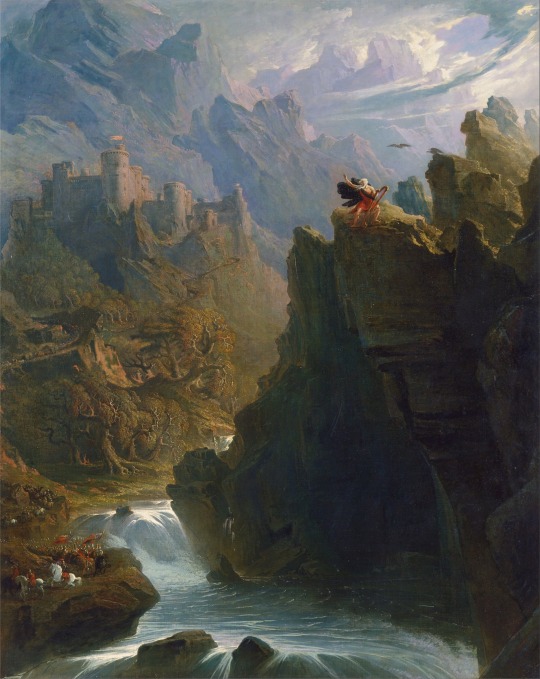
The Bard by John Martin
#the bard#john martin#art#romantic#landscape#poem#thomas gray#romanticism#harp#druids#edward i#conquest#wales#britain#england#medieval#middle ages#knights#army#mountains#snowdonia#celtic#welsh#bard#plantagenet#castle#waterfalls#river#conwy#harlech
451 notes
·
View notes
Photo


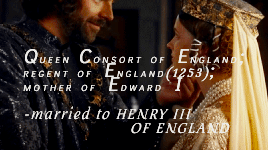

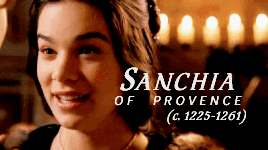


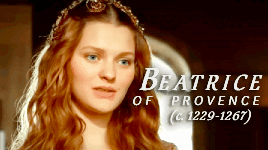
♕ — The Four Queens
"In fact, this elite gathering represented the triumph of international diplomacy. <…> The architects of this diplomatic coup were neither ambassadors nor statesmen. No king’s counselor had a hand in it, no great knight nor influential baron. It was managed entirely by one family –a family of four sisters who had risen from near obscurity to become the most celebrated and powerful women of their time. Almost nothing of significance that occurred in Western Europe during the period in which they lived was not influenced by the actions of this family. It is impossible to fully understands the underlying political motivations of the thirteenth century without them."
— Nancy Goldstone, Four Queens: The Provencal Sisters Who Ruled Europe
#historyedit#history#margaret of provence#eleanor of provence#sanchia of provence#beatrice of provence#perioddramaedit#louis ix#henry iii#edward i#cortegiania#gifshistorical#perioddramasource#periodedits#onlyperioddramas#userperioddrama#queenage#women in history#my edit#*queens#fancast olivia ross from knightfall as literally every medeival lady -challenge
289 notes
·
View notes
Text
The king [Edward I] does not send for his son [the future Edward II] to assault him, in either representation of the scene. The prince is brought to his father’s presence in order that the king might answer the flagrantly inappropriate request in person—and in public. In a world whose symbol-laden power structures were a network of personal relationships, public emotionality was central to the negotiation and demonstration of political interaction. The love between a lord and his vassal was not a private and personal feeling. It was a social fact, confirmed and demonstrated by quasi-ritualized public demonstration—as was the love (even more carefully performed) between princes of different states.The opposite of that love, the souring of that carefully maintained relationship, was not hatred but anger—or rather, one particular kind of anger. This anger is synonymous (not analogous) with terms that we would usually consider sociopolitical, but which are in this worldview intensely and personally emotional: that is, with war(if between opposing states),or vengeance and justice (if against an erring vassal). In fact, the outbreak of war is frequently stated in chronicles as an eruption of anger between leading individuals: ‘when he heard this he was full sore annoyed at X’,‘in that year anger arose between the King of Y and Z’, just as reconciliation is expressed as renewing or extending love or favour. Both shifts are usually accompanied by a public performance: that from anger to love with embraces and kisses and a formal loveday, that from love to anger with displays of affronted rage.
Hannah Kilpatrick, "Edward I's Temper: Anger and Its Misrepresentations in the Chronicle of Walter of Guisborough and the Fineshade Chronicle", The Medieval Chronicle, Vol. 12, 2019.
#thinking about this in relation to#prince henry's dagger incident#edward i#edward ii#historian: hannah kilpatrick
8 notes
·
View notes
Text
Si vous aimez l'Histoire n'hésitez pas à consulter mes petits morceaux de la petite histoire.
Suivez les aventures de Baudouin IV de Jérusalem, de Bohémond de Tarente, d'Édouard Ier d'Angleterre et des autres souverains et souveraines de France, d'Angleterre, de Terre Sainte et de Navarre.

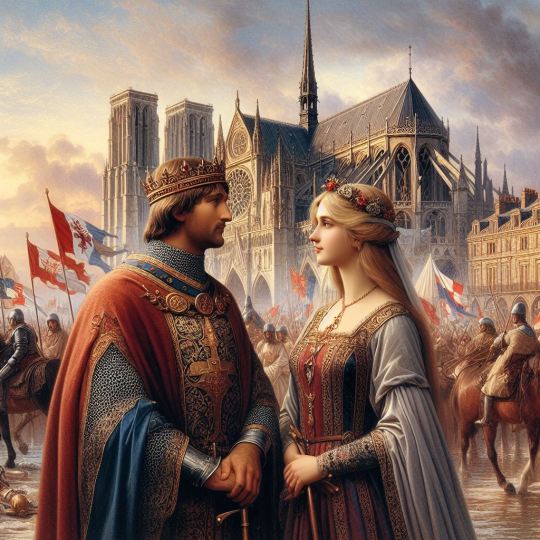
#history medieval#medieval history#medieval#england#france#holy land#king baldwin#baldwin iv#baudouin iv#Bohemond of Tarento#Bohemond I of Antioch#Edward I#Edouard I#histoire#historical
11 notes
·
View notes
Text

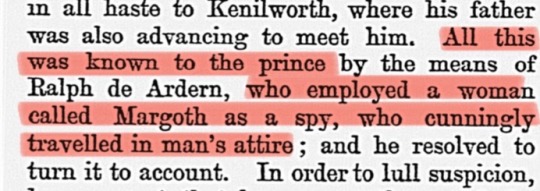
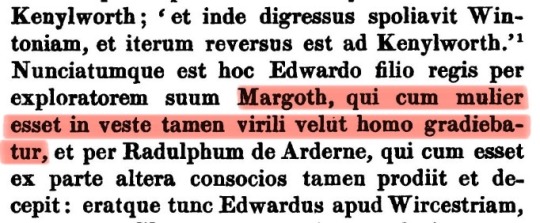

Margoth, the crossdressing, gender bending ‘transvestite’ royal spy of King Henry III and Prince Edward - Later King Edward I - who helped to turn the tides in the Second Baron’s War of 1264-1267
Sources: The Plantagenets (2012), Dan Jones / Memories of Kennilworth (1867), Edward Waldorf / The Chronicles of Walter of Guisborough (1272-1312) (crudely translated by me)
#I spent TWO HOURS trying to get a copy of the original guisborough text#it was listed as the primary source for her everywhere but i had to kill someone to actually find the writing itself#2 by clear I obviously know that both edward i and henry iii were deeply evil men im not hyping them up#this is just interesting#margoth#Edward i#Henry iii#plantagenets#history#transgender#double shot
13 notes
·
View notes
Text



#doge#scotland#Edward I#stirling castle#trebuchet#Scottish Wars of Independence#Loup de Guerre#le irritating people looking through tags has arrived#le they're all relevant tho has arrived
51 notes
·
View notes
Text

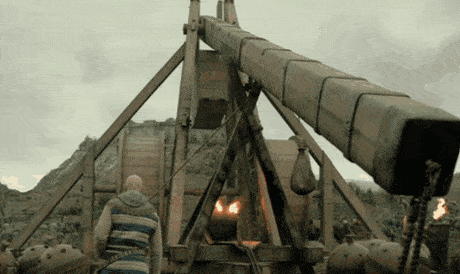
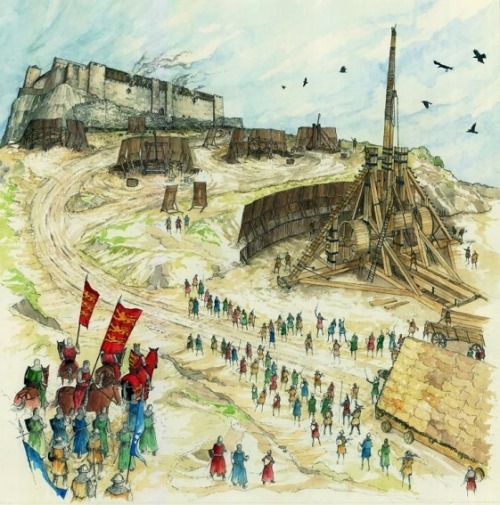

July 20th 1304 saw the Fall of Stirling Castle.
Edward I of England laid siege to the Castle as part of the the Scottish Wars of Independence.
Stirling was, and indeed still is a formidable castle and the Scots were holding out so Longshanks ordered the building of the trebuchet or as it became known “The Warwolf” the work on it commenced within sight of the castle walls. According to medieval sources five master carpenters and 49 other labourers were given the task of constructing this siege weapon, the biggest of its kind ever to be built. It took three months to finish it and according to modern estimates, the trebuchet would have risen to a height of 300 to 400 feet. It could effectively raid stones at a wall 200 yards away, hurled at a speed of 120 miles per hour.
Witnessing the construction of such a mammoth trebuchet, it is claimed the Scots tried to surrender to Edward but Edward sent back a part of the Scottish garrison into the castle so that he could still test his trebuchet’s prowess.
When used against the Stirling castle, the trebuchet destroyed the gatehouse and was as formidable in its use as its size. Given its size, it could toss stones of up to 300 pounds in weight which, when thrown against the Stirling Castle, effectively demolished the parts of the curtain wall where they hit.
Other mentions of the trebuchet is that Edward ordered the payment of 10 shillings to the workers and the overall construction of the trebuchet itself cost upwards of 40 pounds, and of another worker being paid for guarding the material used to construct the trebuchet. Apart from these, no detailed mentions of the weapon exist nor are any remains of it today, not surprising as it would mainly have been made of wood and to e moved elsewhere it filled up to 30 wagons.
Stirling would remain under the occupancy of the English until 1314 whem it was surrendered after Bannockburn.
#scotland#scottish#history#stirling castle#edward i#longshanks#england#the first war of scottish independence
18 notes
·
View notes
Text

The only Kings I’m pledging allegiance to! 😂
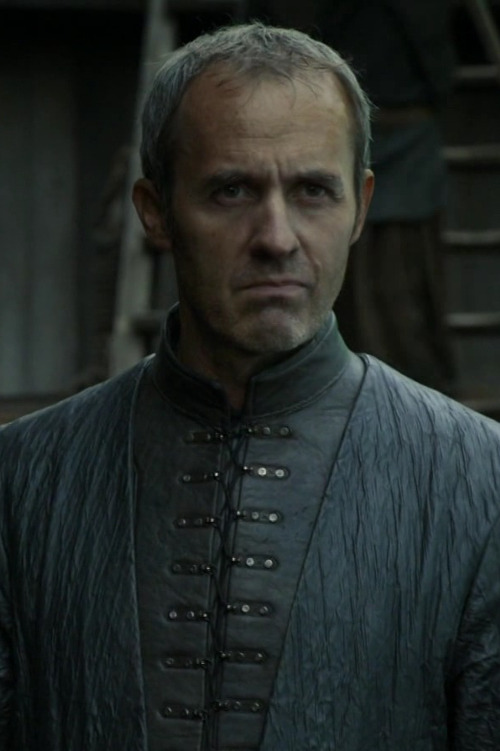
24 notes
·
View notes
Text
watching braveheart for the first time why did they describe edward i as pagan in a derogatory sense. not only are there a hundred more valid reasons not to like edward i he was literally christian
12 notes
·
View notes
Text
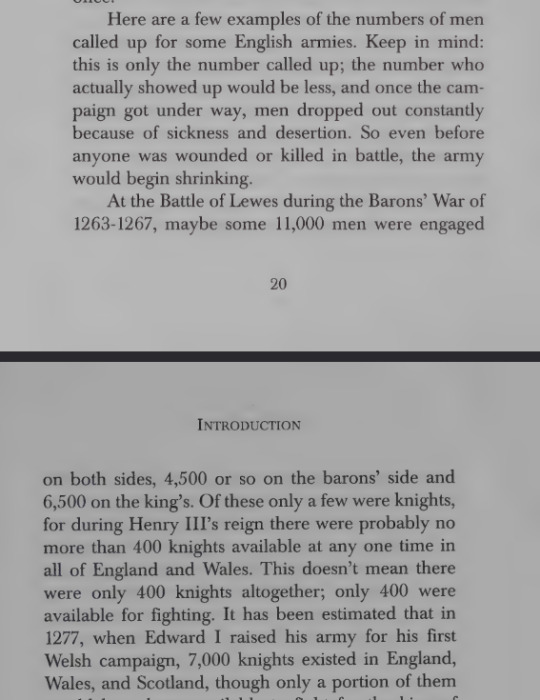
Source: A Knight in Battle -- R. Ewart Oakeshott
(Alt text under the cut)
Text: Here are a few examples of the numbers of men called up for some English armies. Keep in mind: This is only the number called up; the number who actually showed up would be less, and once the campaign got under way, men dropped out constantly because of sickness and desertion. So even before anyone was wounded or killed in battle, the army would be shrinking.
At the battle of Lewes during the Barons' War of 1263-1267, maybe some 11,000 men were engaged on both sides, so 4,500 or so on the barons' side and 6,500 on the king's. Of these only a few were knights, for during Henry III's reign there were probably no more than 400 knights available at any one time in all of England and Wales. This doesn't mean there were only 400 knights altogether; only 400 were available for fighting. It has been estimated that in 1277, when Edward I raised his army for his first Welsh campaign, 7000 knights existed in England, Wales, and Scotland, though only a portion of them (The text cuts off)
#knights#Edward I#Battle of Lewes#13th century#England#Barons War#Welsh#Scotland#A Knight in Battle#Oakeshott
2 notes
·
View notes
Text
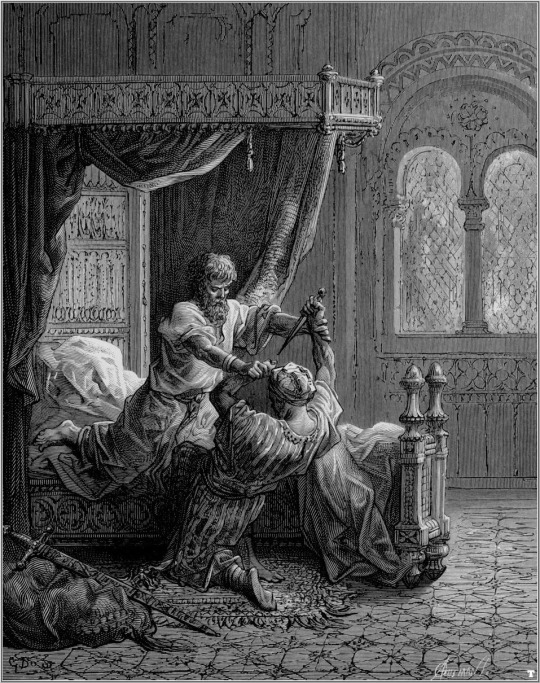
Edward I kills his attempted assassin by Gustave Doré
Edward I was nearly killed by an Assassin during Lord Edward's Crusade, most likely sent by the Mamluk Sultan Baibars, in order to remove his opposition to a 10-year truce with the Christian states at Jerusalem. He narrowly survived poisoning from the blade of the Assassin.
#gustave doré#edward longshanks#edward i#king#england#crusade#assassin#art#crusades#assassins#history#order of assassins#medieval#middles ages#bibliothèque des croisades
129 notes
·
View notes
Photo






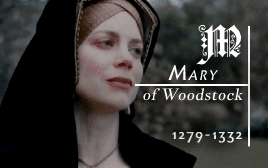
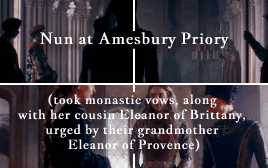


♛ Daughters of Edward I and Eleanor of Castile
⤷ and some of their famous descendants
#historyedit#eleanor of england#joan of acre#margaret of england#mary of woodstock#elizabeth of rhuddlan#edward i#eleanor of castile#edward iv#richard iii#katherine parr#anne boleyn#henry v#mary queen of scots#perioddramaedit#gifshistorical#perioddramasource#women in history#history#my edit
416 notes
·
View notes
Text
14 notes
·
View notes
Text
#booklr#books#alienor of aquitaine#eleanor of aquitaine#henry ii#Henry III#Edward I#Edward II#Edward III#John#the black prince#edward iv#Richard II#richard iii
2 notes
·
View notes
Text
"Mary and Elizabeth also saw their influence fade, in part because their brother's attention was normally focused on the advice of his favorites,and in part simply because they were less frequently at court. Mary continued to use her connection to the king when it benefited Amesbury - in appeals to the Pope, or in disputes between the priory and the abbess of its motherhouse at Fontevraud. And, though she was less often at court, Mary still exercised the special freedoms of movement she had always enjoyed - once her estates had been confirmed by her brother, she continued to travel to her manors, including Swainston on the Isle of Wight, where she held a sizeable house with a great hall brightened by large Gothic windows, that had been built in the thirteenth century by the Bishop of Winchester. Increasingly her energy, however, seems to have been expended in raising, educating, and safeguarding as much as she could the daughters of her sisters and nieces, including Elizabeth de Clare, Eleanor de Bohun, Joanna de Monthermer (who joined the priory at Amesbury as a fully professed nun), and Joanna Gaveston. The last of these died young while living at Amesbury, as did Mary's half-sister, Princess Eleanor, daughter of Queen Marguerite."
Daughters of Chivalry: The Forgotten Princesses of King Edward Longshanks, Kelcey Wilson-Lee
4 notes
·
View notes
